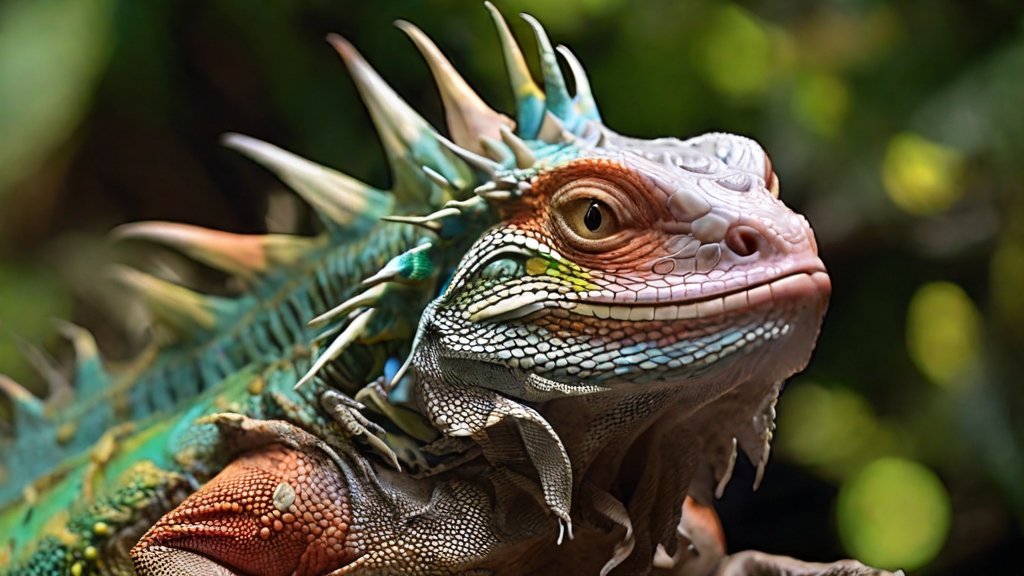Iguanas, with their vibrant colors and unique features, have always fascinated nature enthusiasts. To truly appreciate these reptiles, it is crucial to understand their activity patterns. Observing iguanas during their most active periods can offer valuable insights into their natural behaviors and habits.
Factors Influencing Iguana Activity
Several factors influence the activity levels of iguanas. One of the key drivers is temperature. Being cold-blooded creatures, iguanas rely on external heat sources to regulate their body temperature. This makes them most active during warm, sunny days when they can bask in the sun and absorb the necessary warmth.
Temperature: A Key Driver for Iguana Activity
Iguanas are ectothermic animals, meaning they cannot generate their own body heat. Instead, they rely on their environment to maintain the right temperature. The optimal temperature range for iguanas is between 75 to 95 degrees Fahrenheit (24 to 35 degrees Celsius).
As the temperature rises within this range, iguanas become more active, engaging in activities such as foraging, hunting, and socializing.
Time of Day: Unveiling Iguanas’ Preferred Schedule
While temperature plays a significant role, the time of day also influences the activity patterns of iguanas. These reptiles are diurnal, meaning they are most active during daylight hours. The morning and late afternoon are the prime times to spot their activity, as they take advantage of the sun’s warmth and light.
Seasonal Variations in Iguana Activity
Iguanas’ activity levels can vary depending on the season. During the cooler months, such as winter, their activity reduces significantly. They may go into a state of torpor, where their metabolic rate decreases, allowing them to conserve energy. As the temperature starts to rise in spring, iguanas become more active, preparing for the breeding season.
Impact of Habitat on Iguana Activity Levels
The habitat of iguanas can also influence their activity patterns. In regions with dense vegetation and ample hiding spots, iguanas may exhibit more cautious behavior, spending more time concealed. On the other hand, in open areas with plenty of sun exposure, they are more likely to engage in active behaviors, such as basking and foraging.
Examining Iguanas’ Diet and its Relationship to Activity
Iguanas’ diet primarily consists of vegetation, including leaves, fruits, and flowers. Their activity is often linked to their feeding patterns. Iguanas are known to be opportunistic feeders, actively seeking out food sources. Their activity levels may peak during periods when food availability is high, such as the fruiting season of certain plants.
Social Behavior: How it Affects Iguana Activity
Iguanas are social creatures and live in hierarchical groups. Their activity levels can be influenced by their interactions with other members of the group. During mating season, male iguanas may engage in territorial displays and compete for the attention of females. This heightened social activity can lead to increased overall activity levels among iguanas.
Iguana Activity and Reproductive Cycles
The reproductive cycles of iguanas can impact their activity patterns. Female iguanas often become more active during the breeding season, as they search for suitable nesting sites and mate with dominant males. Males, on the other hand, may exhibit increased activity levels as they compete for mating opportunities.
Observing Iguanas: The Best Times to Spot Their Activity
To catch a glimpse of these fascinating reptiles in their most active state, it is recommended to venture out during the early morning or late afternoon.
During these times, iguanas are more likely to be found basking in the sun or engaging in other activities. It is important to approach them cautiously and observe from a safe distance, respecting their natural habitat.
Conclusion: Uncovering the Secrets of Iguana Activity
Understanding the activity patterns of iguanas is essential for anyone interested in these captivating creatures. By considering factors such as temperature, time of day, habitat, diet, and social behavior, we can unravel the secrets of their activity.
So, next time you embark on an iguana-watching adventure, keep in mind the best times to spot their dynamic behaviors and gain a deeper appreciation for these remarkable reptiles.




